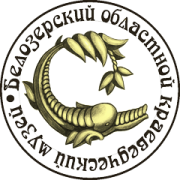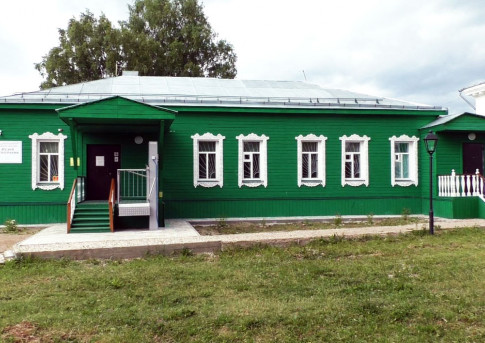The Museum of Ethnography
The entrance area of the museum combines the functions of a wardrobe, a cash register and an exhibition space.
The first hall is represented by the exposition complex "Author's recipes of traditional Belozersk cuisine". Here guests can get acquainted with the variety of traditional Belozersk dishes. Each of the presented recipes is written in the local dialect from the words of the keepers of this knowledge who lived on the territory of the Belozersky region. Of particular value is a selection of recipes for cooking fish dishes, since the Belozersky region has long been famous for fish stocks.
The second hall reveals the theme of the life of a peasant family of the late XIX - early XX centuries, where the main task of the exhibition space is to show and tell visitors how life was arranged in a village house. The space is divided into several exhibition zones: "Red Corner", "Babi Kut", "Childhood". In the hall, along with information modules, there is an audio unit with lullabies, a showcase with antique toys.
In this hall, you can immerse yourself in the past "with your head": take a place of honor in the red corner, see an authentic Russian oven, in which, by the way, dishes are prepared only according to traditional Belozersk recipes. All the exhibits are authentic, you can not just look at them, but also pick them up. Those who wish will be able to try on traditional costumes and feel like a "big man" (host) and a "big woman" (hostess).
The third hall is dedicated to the theme of girlhood and is complemented by an interactive exhibition part. In the hall on the podium there is an exhibition "Maiden's Room", equipped with audio modules with girlish songs, wedding dresses and others.
Especially attractive for young visitors is the exposition block "Village Manor" with interactive elements and multimedia equipment.
"Maiden's Room" will tell about the moral education of the younger generation, getting used to farming and how, in general, girls were brought up and what they were taught in the period of the 19th - early 20th centuries. Hardly everyone knows which girl was called a "slut" and which guy was called a "drolechka"?
Here they will tell you how traditional youth conversations and gatherings took place, how they had fun, what games the girls and boys played. Anyone can participate in these amusements. In addition, this hall presents a collection of ancient, extremely beautiful towels and towels made by local needlewomen, which are stored in the funds of the Belozersky Regional Museum of Local Lore. These household items had their own special purpose and played an important role, as the exhibition "And everything native will come to life on that towel" will tell. The showcase is equipped with retractable planes, on which the stages of flax processing are presented and the meanings of the elements of ancient embroidery are revealed. Those who wish can try themselves as spinners and weavers, as well as perform a stitch on a sewing machine or participate in a master class on making traditional folk rag dolls.
In the fourth hall there is an exposition "Men's crafts and needlework", where visitors get acquainted with the occupations of men at different times of the year and various male crafts that existed in the Belozerye of the late XIX - early XX centuries. The exhibition presents traditional men's crafts: blacksmithing, carpentry, shoemaking, as well as birch bark weaving. Among the ethnographic objects presented at the exposition there are ancient craft tools: a plane – a bear, a bone, a gimlet, a trait, a skobel and many others, as well as unique objects of peasant life made by the hands of the masters of the White Lake region at the turn of the XIX-XX centuries.
All expositions are equipped with modern equipment. All halls are supplemented with a Braille label. In addition, the museum is now accessible to low-mobility groups of visitors, a lifting platform for the disabled is installed at the entrance to the building, and there is also a wheelchair for ease of movement around the exposition.

